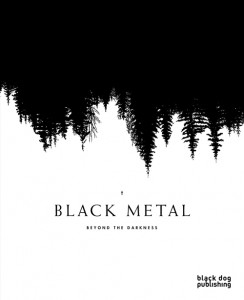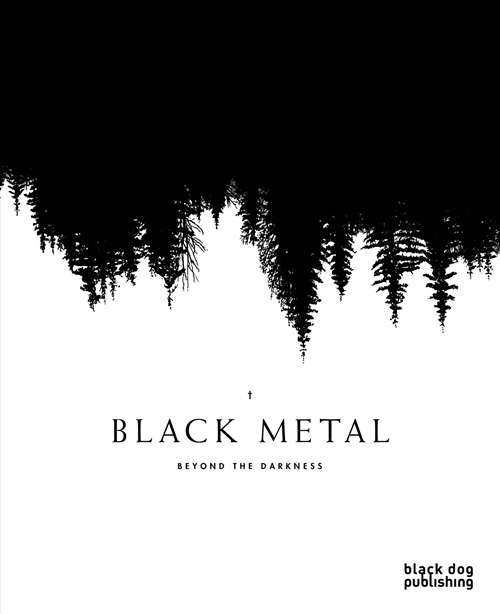 Indeed it is “a story that’s been told countless times before.” The origins of black metal as a musical art form are always going to stir interest from those both within and outside the scene. One wonders if centuries down the line the sad events that really put it on the map are going to be laid down through generations like old age folklore. If they are we can only hope the church burnings, the suicide of Per Yngve (Dead) Ohlin and the death of Øystein (Euronymous) Aarseth at the hands of Varg Vikernes are not twisted out of shape. There was no glory here, just plain cold murder centred on an emerging scene by a bunch of teenagers from their Helvete shop base in Norway.
Indeed it is “a story that’s been told countless times before.” The origins of black metal as a musical art form are always going to stir interest from those both within and outside the scene. One wonders if centuries down the line the sad events that really put it on the map are going to be laid down through generations like old age folklore. If they are we can only hope the church burnings, the suicide of Per Yngve (Dead) Ohlin and the death of Øystein (Euronymous) Aarseth at the hands of Varg Vikernes are not twisted out of shape. There was no glory here, just plain cold murder centred on an emerging scene by a bunch of teenagers from their Helvete shop base in Norway.
Thankfully although this large format paperback cannot avoid the above subject matter it goes way beyond it and takes Black Metal to the present day with a series of essays by people who generally contribute in some way or another to the music itself. This takes in a broad range of subjects and it is an interesting read that is worthy of dipping into by those who are heavily into the music as well as those with a fleeting interest in it. Of course as far as I am concerned I devoured it cover to cover in just a few sittings but it is a book I will happily revisit again and although I do not feel like I learned a great deal from it, I did come away with more of an understanding based on the wide variety of viewpoints involved.
The scene is set by Zero Tolerance current editor Nathan T Birk who goes looking past Helvete and the Norwegian scene and pinpoints other areas of growth within Europe. The Greek and the Italians contributed in the mid nineties and France slightly behind them. As I was reading I was thinking that the likes of Masters Hammer and Root had to be mentioned too and then I turned the page…. Yes it is all there along with a handy list at the end of the chapter identifying the musical landscape through these countries and onto Poland and beyond
I found Brendon Stosuy editor at Pitchfork’s section ‘A Blaze Across The North American Sky’ the most interesting. For a start he puts things in as much context as a meeting with Snorre Ruch allows and from there covers the basic questions such as what is the difference between death and black metal and what exactly is the second wave of black metal referring too (very useful to the uninitiated) before moving forward and explaining the development of this in the United States (USBM). Not only do we get a crash course in the music from there but we also get pages worth of interview quotes from people in the bands and labels themselves talking about their opinions on USBM. I enjoyed the arguments on how clearly identifiable the USBM sound was. Opinion is certainly split but is always thoughtfully laid down. Blaash of Bahimiron for instance states that he finds black metal from America to be more brutal (as does Xaphan of Kult Ov Azazel) but then almost backtracks saying of course there were exceptions such as Marduk, Immortal etc. You will certainly be entertained reading thoughts by the likes of members from Inquisition, Negative Plane, Averse Seferia, Ludicra etc though. One person who obviously was incredibly important as far as USBM is concerned is Neill Jameson (Imperial) of Krieg and apart from his quotes he has a couple of pages of his own to contextualise things.
I found a couple of parts a bit too pretentious especially Hunter-Hunt Hendrix of Liturgy’s dissection of the music ‘Transcendental Black Metal’ which goes on to try and create some sort of formulae to explain it all. It does make some sort of sense if you really want to try and analyse it all and talk about the differences between Transcendental and Hyperborean black metal and orientation of the haptic void, and the comparisons of burst and blast beat but yeah well….. Elsewhere there are essays on the scope of individualism in black metal and naturally there are times the brick bat that is NSBM has to be cited. There are others on the similarities and overlaps between traditional art and black metal (black metal emerges into its own pop culture perhaps).
Also of great interest are parts which go beyond the actual music. We have the designers and those that illustrate the sleeves. We have an interview with the iconographer Christophe Szpajdel as well as those behind the main fanzines such as Slayer. There are also some good bits about the actual selling of the end product with those behind the stores (amazingly including the HMV music manager) and the distros. Basically each and every aesthetic is looked at in one way or another which although done in fairly short segments makes this on the whole quite a comprehensive study.
Of course I should mention that the book is heavily illustrated in mainly black and white with photos of the bands through to the artwork, logos and even some somewhat clichéd but atmospheric double page forest photos.
The overall layout and size of the book does not make it ideal for popping in a bag and I keep looking at it and thinking it’s ideal for the Hoxton hipster coffee table to be prominently placed for a beard stroking discussion when ghastly friends call in for a skinny cafe latte but that’s just the prejudiced, misanthropic, cynic in me!
More details and ordering info can be found at the link below
http://blackdogonline.com/music/black-metal.html
Pete Woods

01/09/2012 at 5:17 pm
Just ordered it! Sounds spot on.